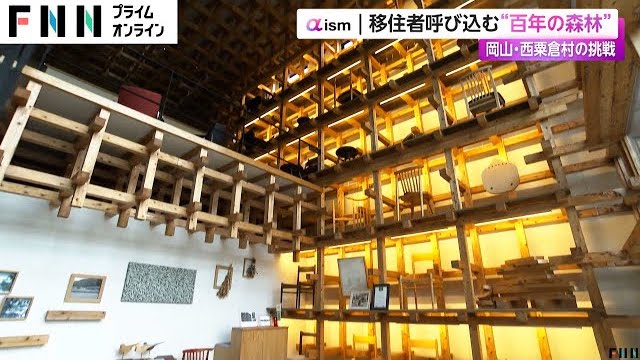Okayama, Aug 16 (News On Japan) - Nishiawakura Village, located in the northeastern part of Okayama Prefecture, is a small village with a population of about 1,300 people. With no convenience stores and only two traffic lights, this village embarked on a significant initiative in 2008 called the 'Nishiawakura Century Forest Plan.'

Nishiawakura's Deputy Mayor, Takahiro Kamiyama, explained: “The Century Forest Plan was conceived during the major municipal mergers of the Heisei era in 2004. Since 60% of the residents chose not to merge with neighboring municipalities, the village faced a substantial challenge of sustaining itself without merging despite its small size and limited financial resources.”
The focus was placed on the village's vast forests, which cover more than 90% of its area. These cedar and cypress plantations, treasures passed down through generations, became the cornerstone of the village's revitalization efforts. By maximizing the use of these forests, the village began promoting itself both locally and beyond, with the aim of transforming into a vibrant and prosperous community for future generations.
One of the newcomers drawn to the village was Nao Tabata, who moved there in 2017. A former IT startup employee, Tabata co-founded a company focused on forest survey and management after discovering an unexpected interest in forestry.
Tabata, now co-representative of Hyakumori Co., Ltd., remarked, “I wasn’t originally interested in the mountains, but after visiting with friends a few times to learn about forestry, I found it intriguing and decided to give it a try.”
In addition to surveying forests and designing work roads to improve the quality of the trees, there is a mountain of work to be done. Among those contributing to the village's revitalization is Masayuki Oshima, who moved to Nishiawakura in 2009. He now runs a furniture manufacturing and sales company using local timber.
Oshima, CEO of Youbi Co., Ltd., shared, “I moved here on August 6, 2009. By creating furniture through the Century Forest Plan, I realized that not only could we make people happy, but we could also enhance the beauty of the forest and the community.”
The joy of the villagers is spreading to the region and connecting with the future generations. So far, around 50 companies have been established in Nishiawakura by people who resonate with this vision, and now about 20% of the village's population consists of newcomers.
A decade ago, a survey suggested that Nishiawakura Village might disappear in the future. However, the village's name was removed from a similar list released in 2024.
Tabata, from Hyakumori Co., Ltd., reflected, “We haven't succeeded yet, but the struggle toward success is quite interesting.”
Oshima, from Youbi Co., Ltd., added, “Being able to fully immerse oneself in the challenges they are passionate about, thanks to the village's various policies and the culture of welcoming newcomers, is what makes this village so attractive.”
Deputy Mayor Kamiyama concluded, “By making full use of our greatest existing resource, a business model was born. Alongside it, social businesses in education, care, and welfare have expanded. We will continue to build a system that allows the region to fully utilize its inherent strengths.”
This small village's bold challenge continues as Nishiawakura Village marches toward the future.
Source: FNN














